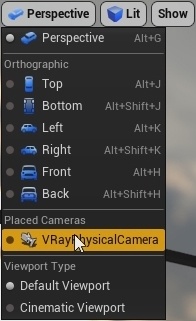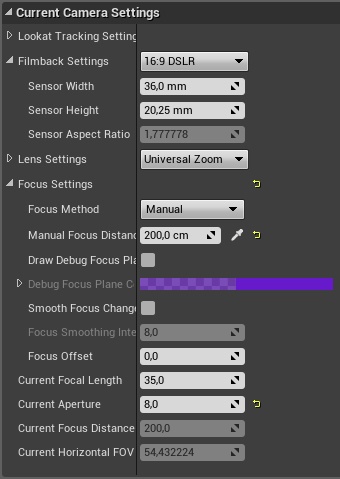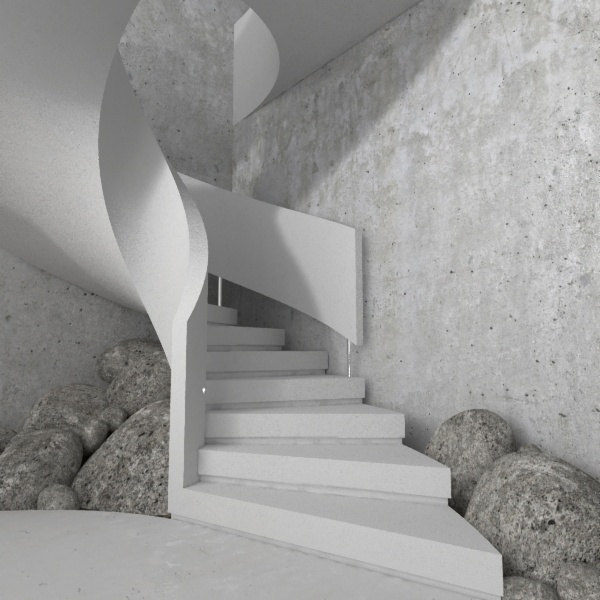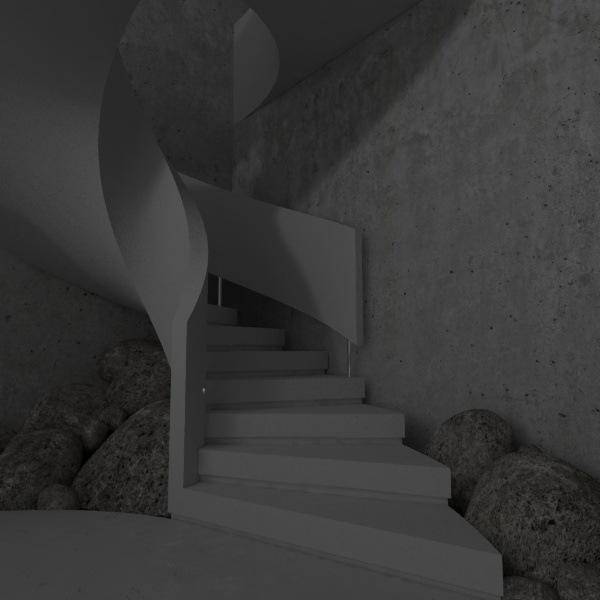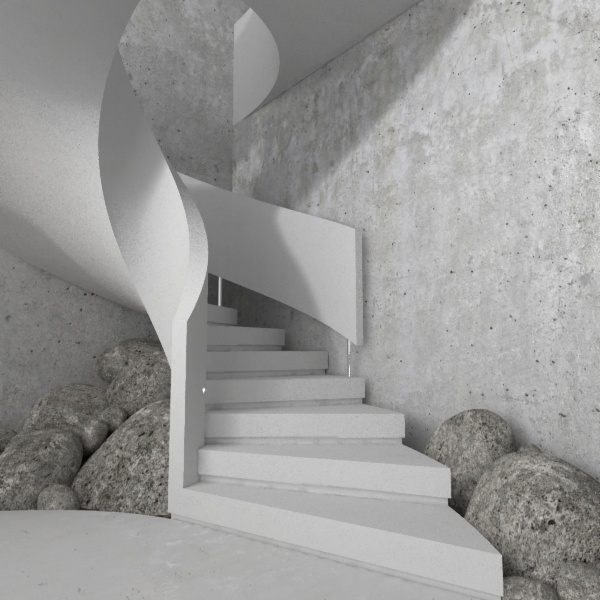This page provides information on Cameras and Camera Settings in V-Ray for Unreal.
Overview
V-Ray for Unreal works with standard Unreal cameras and Viewports. However, the standard cameras do not provide exposure control. To use exposure control and other real-world camera settings, it is recommended to use the VRayPhysicalCamera Blueprint Actor.
The exposure and color corrections do not work as a global PostProcess volume and are individual per camera. To see the changes you make to the VRayPhysicalCamera's settings in the viewport you have to look through the camera itself.
UI Paths
The VRayPhysicalCamera actor is accessible through the Modes > V-Ray Assets > VRayPhysicalCamera or from VRayForUnreal > Content > BP > Actors > VRayPhysicalCamera in the Content Browser Tree. Select the Blueprint and drag and drop it in the level.
||Modes Tab|| > V-Ray Assets > VRayPhysicalCamera
||Content Browser|| > VRayForUnreal > Content > BP > Actors > VRayPhysicalCamera
For the VRayForUnreal folder to be visible, you first need to enable Show Engine Content and Show Plugin Content in the View Options of the Content Browser.
Camera Settings
The VRayPhysicalCamera is based on the Unreal Camera, therefore all features are present and accessible but only some are supported in the current version. When rendering with V-Ray the following parameters are supported:
Current Camera Settings
Filmback Settings
Sensor Width – Specifies the horizontal size of the film gate in millimeters.
Sensor Height – Specifies the vertical size of the film gate in millimeters.
Focus Settings
Focus Method – Specifies if Depth of Field (DoF) is applied to the camera. None means no DoF is applied. When Manual is selected, the DoF is controlled by the Manual Focus Distance and F-number parameters.
Manual Focus Distance – Specifies the distance at which objects are in focus.
Current Focal Length – Specifies the equivalent focal length of the camera lens in millimeters.
The DoF feature is unsupported and when setting the Focus Method to Manual will not blur objects that are not in focus. However Manual Focus Distance is used to calculate the exposure when Enable Exposure is On and 3ds Max Compatible is Off in VRay Physical Camera Settings category.
NEW You can use Unreal's PostProcess effects in the Color Grading, Film, Lens categories such as Bloom, Lens Flares, Chromatic Aberations , etc. to modify the feel and look of the camera shot. Please note that Unreal's tonemapper and PosProcess effects will be enabled when looking through the VRayPhysicalCamera and Enable Viewport Rendering is On, or when using Unreal's Camera or CineCamera actor.
VRay Physical Camera Settings
Enable Exposure – Enables V-Ray exposure control. When enabled, the F-number, Shutter Speed ^-1, and Film Speed (ISO) settings will affect the image brightness. NEW If enabled, Unreal's tonemapper and PostProcess effects will be disabled when looking through the camera and Enable Viewport Rendering is On .
3ds Max Compatible – Enables 3ds Max compatible exposure control. Enable Exposure must also be checked for 3ds Max exposure to work.
Film Speed (ISO) – Determines the film sensitivity. Smaller values make the image darker, while larger values make it brighter.
Shutter Speed S^-1 – Specifies the shutter speed, in inverse seconds, for the still photographic camera. For example, shutter speed of 1/30 s corresponds to a value of 30 for this parameter.
F-number – Determines the width of the camera aperture and, indirectly, exposure. If the Enable Exposure option is checked, changing the F-number will affect the image brightness.
White Balance – Allows additional modification of the image output. Objects in the scene that have the specified color will appear white in the image. Note that only the color hue is taken into consideration; the brightness of the color is ignored.
Color Mapping
Reinhard Burn Value - Specifies the multiplier applied to bright colors.
Examples
Film Speed(ISO)
(Shutter Speed=100; F-number=1.4; White Balance= (1,1,1) )
Shutter Speed ^-1
(Film Speed(ISO)=100; F-number=1.4; White Balance= (1,1,1) )
F-number
(Film Speed(ISO)=100; Shutter Speed=100; White Balance= (1,1,1) )
White Balance
(Film Speed(ISO)=100; Shutter Speed=100; F-number =1.4)


